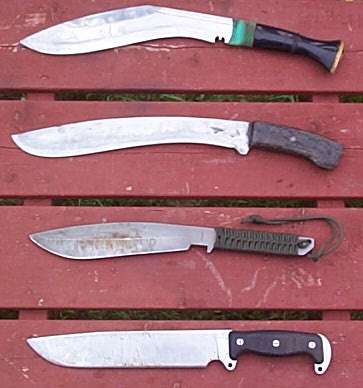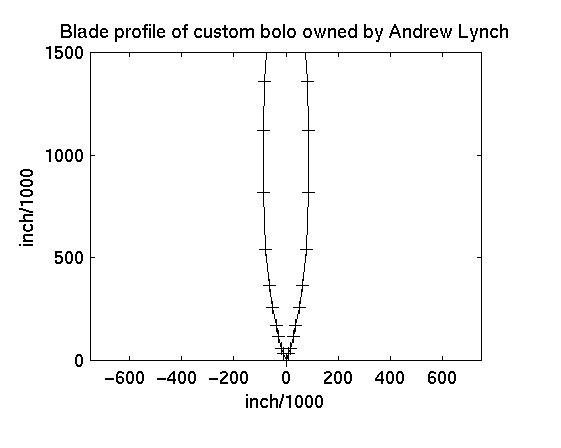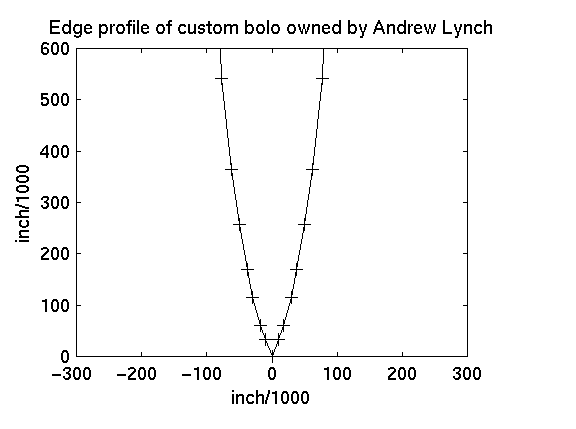
A shot of the bush knife:

From top to bottom; an 18" Ang Khola khukuri from Himalayan Imports , the custom bush knife, a PAB from Strider, and a straight handled Battle Mistress from Busse Combat.
This is a large brush blade owned by Andrew Lynch, similar in design to the Blackjack Marauder. It is hand forged to shape which shows along the primary grind. It is a meld of a bolo and khukuri. It weighs 700g with the balance point four inches from the center of the grip. The blade came with a wooden scabbard, which does not retain the blade if it is turned upside down which is common on such blades. The edge had a very slight secondary edge bevel which was blended back into the primary after about half an hour on a 200 grit silicon carbide waterstone. The face of the guard was also rounded as it was a little sharp.

and a close up of the edge :

The knife pointed the hardwood dowels in 10.5 (6) slices, strong performance for a knife of its size. Some chopping comparisons against the Gransfors Bruks Wildlife hatchet showed it to have 91 (3) % of the hatchets raw chopping ability on small felled wood.
The knife was used extensively in the fall of 2001 limbing smaller sticks as well as some felling and bucking. It worked well even on chopping well seasoned and knotty spruce. On bone dry limbing where the wood often fractured during the chopping the edge of the bush knife tended to lightly flatten near the tip. It was compared extensively in the spring and summer of 2002 against a number of other blades which had been personally regound so as to optomized their cutting ability. Lynch's bush knife held its own in terms of raw cutting ability and the curvature showed its value on lighter work as it acted to "lock" the vegetation. However the boxy handle often proved to be a problem. After working for a few hours it was common for the ring finger to show signs of irritation. While the grip is nice and wide, it is squarish and gets slick quickly. There is also not a lot to drive off of at the end of the handle nor much of a guard to prevent your hand from going forward. Grip tape was generally used on the hangle to give additional security, especially in the rain.
Lynch's bush blade worked very well on small woods proving to be one of the more optimal profiles used. It is many to one ahead of knives like the Machax for example which have profiles which are far too thick to be efficient for wood work. The bush blade was similar in cutting and general handling to the Patrol Machete but didn't have the problems with gross failure as seen on multiple Patrol Machetes. The Valiant Golok is another blade which has very nice overally cutting ability and handling for such work but durability problems were also seen with it. Heavy machetes like the Tramontina Bolo also work well for such brush work but because the steel is fairly soft (sping hard) the edge retention is relatively low. The only problem with Lynch's bush knife is that the handle was kind of boxy.
Comments can be sent to : cliffstamp[REMOVE]@cutleryscience.com or posted to :
| Last updated : | 01 : 10 : 2006 |
| Originally written: | 06 : 12 : 2002 |